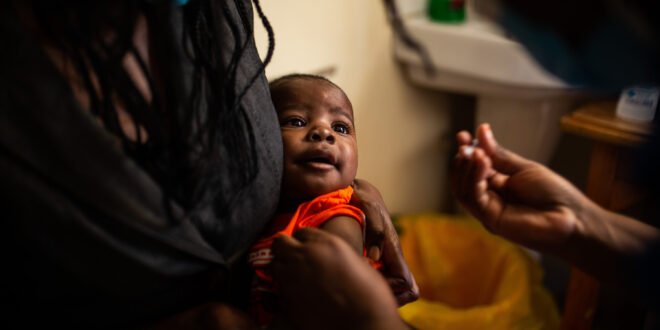The Persistent Challenge of Malaria in Kenya
Malaria remains a significant public health issue in Kenya, despite ongoing efforts to control and eliminate the disease. Researchers have identified that the persistence of malaria is due to a complex combination of environmental, social, and biological factors. Additionally, emerging challenges such as drug and insecticide resistance, new mosquito species, and shifting patterns of disease transmission continue to complicate control measures.
According to a recent report from the Ministry of Health, malaria remains one of the primary causes of hospital visits and deaths in the country. In 2021 alone, an estimated 10,700 deaths were attributed to the disease. Over the past five years, Kenya has recorded an average of 4.9 million outpatient cases annually. The incidence rate has also increased from 96 to 105 cases per 1,000 people between 2019 and 2023.
Regional Disparities in Malaria Transmission
Dr. Stephanie Kamunya, a postdoctoral research fellow at the Centre for Epidemiological Modelling and Analysis (CEMA), highlights that the distribution of malaria across Kenya is highly uneven. The western counties bordering Lake Victoria—Busia, Kakamega, Kisumu, Migori, Siaya, and Vihiga—experience the highest burden. Here, the adjusted incidence reaches an average of 748 cases per 1,000 people. These areas have stable, year-round transmission due to favorable climatic conditions, including low altitude, high rainfall, and warm temperatures, which support mosquito breeding and parasite survival.
Other high-burden counties include Bungoma, Homa Bay, Kwale, Turkana, and West Pokot, each with an average incidence of 474 cases per 1,000 people. In contrast, Nairobi is considered malaria-free, and more than half of Kenya’s counties are now classified as having very low or low transmission rates.
Environmental and Social Factors Driving Transmission
The spread of malaria is closely tied to environmental and social factors. Dr. Kamunya explains that transmission depends on three key elements: the mosquito vector, the parasite, and human hosts. Mosquitoes thrive in hot, wet environments, which are prevalent in lake and coastal regions.
An emerging concern is the detection of new mosquito species, such as Anopheles Stephensi, which prefers urban settings and breeds in man-made containers. This species poses a significant threat by potentially bringing malaria into cities where it was previously rare, complicating existing control strategies.
Changing Trends in Arid Regions
Traditionally, arid and semi-arid counties like Turkana, Marsabit, Isiolo, and Mandera were not considered malaria hotspots. However, recent surveillance has revealed a sharp increase in malaria incidence in these areas. For instance, Turkana has seen its incidence nearly double, rising from 100–200 to 200–350 cases per 1,000 people between 2019 and 2023. Routine surveillance has also detected Plasmodium vivax, a type of malaria parasite that was not commonly found in these northern counties before.
Dr. Kamunya attributes this trend to improved surveillance and reporting, as well as changing environmental conditions, including increased rainfall and climate change, which create new breeding grounds for mosquitoes.
Resistance and the Need for Innovation
A major obstacle in malaria control is the growing resistance observed in both mosquitoes and parasites. Mosquitoes are becoming resistant to commonly used insecticides, while malaria parasites are showing reduced susceptibility to standard antimalarial drugs. This means traditional tools like treated bed nets and standard medications are becoming less effective.
Kenya’s Ambitious Malaria Strategy
In response, Kenya has set an ambitious goal in its latest Malaria Strategy: to reduce malaria incidence by 80% and deaths by 90% from 2023 levels by 2027/2028. Dr. Kamunya remains optimistic about the future, emphasizing that malaria elimination is possible with innovation, political will, and collaboration.
She highlights the importance of strong surveillance, targeted interventions, and community integration. New tools such as vaccines and chemoprevention strategies offer hope, but rapid adaptation to emerging threats like new vectors and resistance is essential. Creating a barrier between mosquitoes and humans is crucial to winning the fight against malaria.
With continued investment, innovation, and vigilance, Kenya has a real chance of achieving its malaria elimination goals.
 Info Malang Raya Its All About World News
Info Malang Raya Its All About World News




